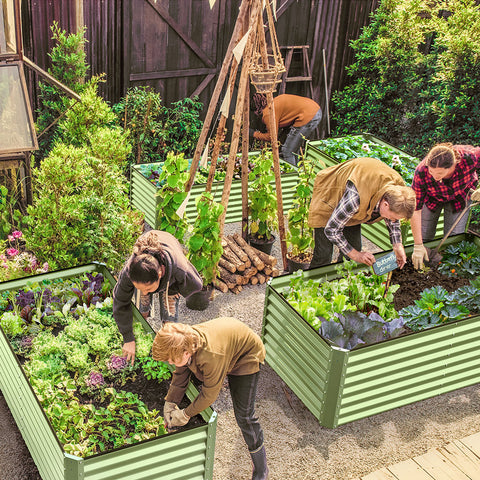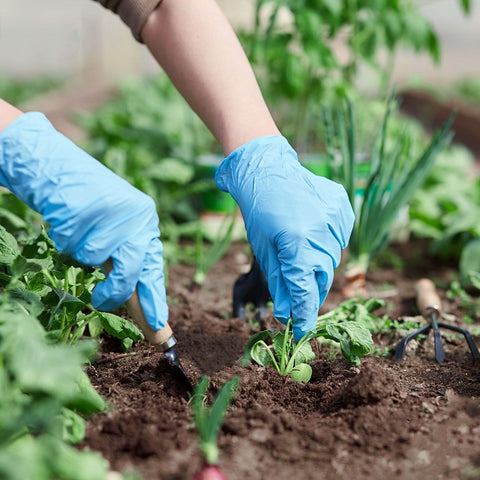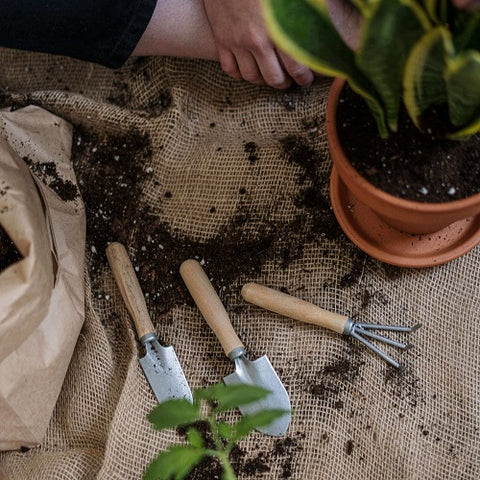Spring gardening is one of the most popular things that most people do. But some people don't make the most of the season. This article guides you on how to Garden within 10 steps in Spring. The following content also has some reference value for raised garden beds.
What is spring?
It is the season when plants and trees begin to bloom. Spring is sometimes called spring, followed by winter and summer, and is one of the four temperate seasons. There are a variety of technical definitions of the word spring, but local usage of the word varies depending on the local climate, culture, and customs.
The south has a northern spring, and vice versa. At the vernal equinox, day and night are around 12 hours, the day time increases, the night time decreases.
Why is spring gardening special?
Spring gardening is special because
- Spring provides the right temperature (after winter and the summer before it), sunshine (12 hours a day), water and other services, as the bright sunshine of clear spring skies and the adaptation of time itself to flowers lead to further flowering in spring.
- Spring is the flowering season. Flowering ensures the continued extension of the life of any plant or tree in the universe.
- The leaves of trees and shrubs can grow again in the spring because the area where the leaves grow (called meristem) does not die in the winter but grows in the spring when the weather is more favourable.

Top 10 tips for spring gardening
Gardeners are happy to get their hands out of the dirt after a long, cold winter. In the warm spring, as memories of winter's extreme storms fade, it's time to think about waking up the garden for a new growing season.
With so much to do, it's easy to feel overwhelmed. By planning and scheduling yourself, spring tasks can be the blink of an eye.
Follow these 10 tips to start gardening in the spring.
- Order summer flowering bulbs and seeds
You must now order summer bulbs and seeds to start gardening in the spring. It's the perfect job for a windy, rainy winter. Flowers such as lilies, gladiolus and buttercups can be ordered in winter and planted in early spring.
- Organize your flower beds and borders
When you start gardening in the spring, do a general sweep, removing leaves and other debris from flower beds and edges. Now, you can remove dead plants from deciduous grasses and perennial herbs, but if you want to live in harmony with wildlife, it's best to leave them until early spring.
When you start gardening in the spring, simply border and bed back to bare soil. Put the dead organic matter you've cleaned up into a compost heap or bin to decompose. Remove the weeds you see, burn them, or bring in your brown bucket. Do not compost them as the seeds will germinate later and cause more problems.
While your soil is growing, dig out a 5cm layer of organic material such as finely ground fertilizer, compost or recycled green waste in an open garden border.
- Clean and wash the greenhouse
Spring gardening is the ideal time to clean the greenhouse and prepare it for spring seedlings and cuttings. Wash the exterior of your greenhouse with a cleaner or disinfectant to remove algae, moss, and general dirt before you start gardening in the spring. This will provide more light during the rising months, thus eliminating possible homes for pests and diseases. Make sure you clean the inside of the glass regularly - pests and diseases will live in the smallest nooks and crannies.
When you start gardening in the spring, sweep off the floor and any plant debris and wash with a hot garden disinfectant such as Jeyes Fluid. While you're there, wash POTS and seed trays to help prevent diseases, such as "moisturizing" your seedlings. Keep the greenhouse well ventilated over the next few days so it can dry completely.
After your greenhouse is cleaned and polished, take the time to inspect the structure for any damage to glass or vents, and repair the damaged parts.

4 Plant any seeds that require a longer season
In January and February, seeds of plants that require a longer growing season will begin to be planted, such as geranium (geranium), begonias, antirhinia, capsicum, and eggplant. They must start in a heated breeder or similar place to ensure good growth.
- Hunt down and remove garden pests
When you start gardening in the spring, you'll be able to monitor and kill hibernating pests, saving you a lot of trouble in the spring and summer. Look closely at the perennials' crowns for winter shelter for slugs, snails and their communities.
If you didn't clean out your summer bedding basin last year, look for some white grape weevil larvae, which live in compost and feed on plant roots. Remove any larvae you find and plan to use parasitic nematodes or chemicals to treat the vine weevil this year.
- Install water pipes to collect rainwater
When you start gardening in the spring, build a water column in your garden this winter to take advantage of seasonal rainfall. Most of the year's rainfall falls in winter, so now is the time to catch it. R
Rainwater harvesting is essential for environmentally friendly gardening. Demand for water peaks during the hottest months, which has also led water companies to turn to groundwater reservoirs and DAMS, which are harmful to the environment and expensive for customers.
When you start gardening in the spring, rain is the best water for plants. In particular, ferns like camellias, azaleas, and blueberries are better suited to rain because tap water is usually slightly alkaline.
When you ride your water butt, place it under the downspout in your home or shed. If you have a closed drain, you'll need a diverter to siphon off some of the rainwater.
- Move deciduous shrubs
Spring gardening is the best time to move some deciduous shrubs because they will remain dormant. Move shrubs at night to keep the wind and drizzle off the roots.
Dig a circle around the bush to create a circular trench that provides a wide berth. Try to make it as easy as possible for the root ball to return to its new position. When you replant the bush to its new location, place the bush at its original height and then remember to water it.
- Maintain walls, gates, and railings
Spring gardening is the best time of year to do small repairs. Inspect fence posts, gates and grilles for any signs of weathering or decay. Repairing any broken structures will give you more time to spend in the garden during the spring and summer. Repair any broken parts or structures.
Next, when you start gardening in the spring, wash the fence panels and gates with an electric washer to remove dirt, moss and mold - using a stiff brush to remove stubborn grime. On dry days, allow the wood to dry completely before adding two coats of stain, paint, or wood preservative.
- Clean and sharpen garden tools.
Keep your tools clean and sharp during the winter. Maintaining your garden tools and starting gardening in the spring will help protect them, save you money in the long run, and help prevent the spread of disease. Dirty scissors are known to add bacteria and fungus to fresh wounds.
Clean bladed tools thoroughly using a good quality cleaner, hot water and cleaner. Sharpening your tools will also improve their performance; They will work easier and have a smoother trim cut. Apply some oil or WD40 to the blades and hinges until sharpened.
Hand tools, including shovels, hoes, troughs, and rakes, can also benefit from good cleaning and oiling.

- Set up a composting area
If you don't already have a composting area in your backyard, spring gardening is the perfect option. It's as simple as buying a compost bin or making your own using alternative wood.
The compost area provides a place for all your organic waste. If it is broken down, you will have a lovely, rich compost and your plants will thrive. Make sure you have a good combination of grass clippings, vegetable peels, paper, and wood clippings. To support this process, you will need to change your garden fork compost every month to keep it breathable.
5 frequently asked Questions and Answers related to spring gardening
- Can you cut perennials in the spring?
Some perennials benefit primarily from frequent harvesting during the summer growing season, but the most important cleanup is in the fall and spring.
Other perennials prefer to grow quickly before winter sets in, so they can get to work in the spring and not be affected by last year's growth.
- What should I add to my garden soil in spring?
Cover the area around the plant with wood shavings, leaves, hay, straw, or bark, using at least 2 inches of organic material per year.
If necessary, cover the crop in the spring and convert it to soil.
- What kind of fertilizer do you use in spring?
The recommended amount of fertilizer for spring is 1 pound of nitrogen per 1,000 square feet.
Different mixtures and products determine the duration of the application, how much to use, and how to use it (granular or liquid).
- When should I clean my flower beds in spring?
Cutting dead plant stems too early in the spring can disturb them before they have a chance to germinate. You can wait as long as you like and tidy up your spring garden.
Ideally, you can wait until the daytime temperature is steady above 50 degrees Fahrenheit.
- What vegetables will you plant in early spring?
Snow pea
lettuce
kale
radish
broccoli

All in all, spring gardening is a great time to assess winter damage, repair equipment, fill holes in the landscape, care for your lawn, make necessary mowing, make new beds, plant bare root or container grown plants, feed all plants, and start composting.
Spring gardening is important because plants begin to grow in the spring due to their natural and seasonal growth. As spring comes, the temperature rises, so does the humidity. In addition to longer daylight hours, it creates favorable growing conditions for plants and trees.









